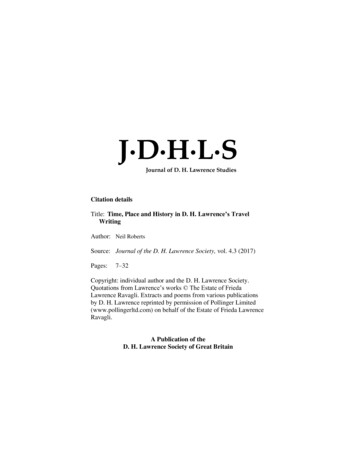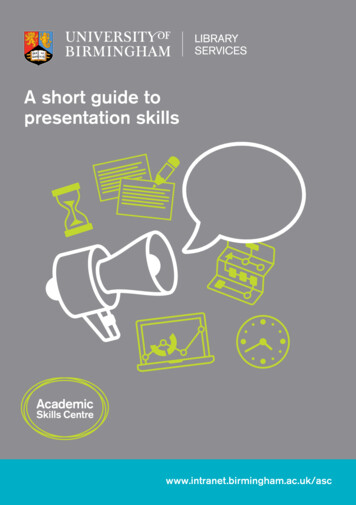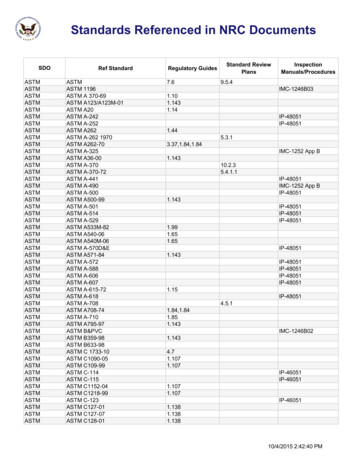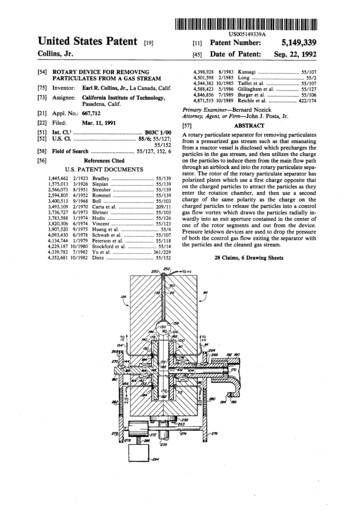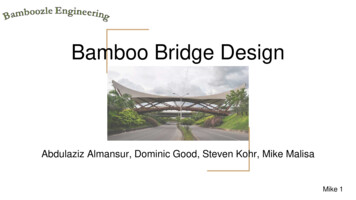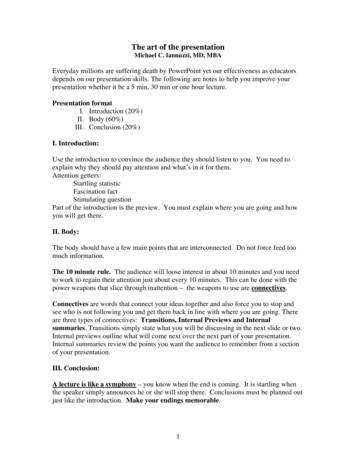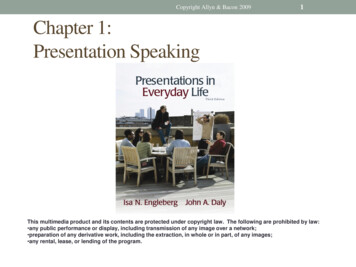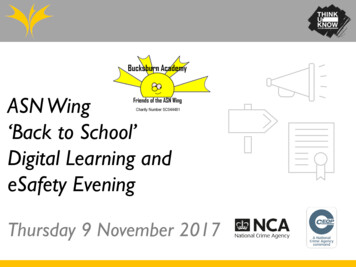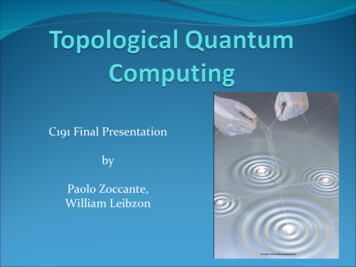
Transcription
C191 Final PresentationbyPaolo Zoccante,William Leibzon
What is it? New paradigm of fault-tolerant quantum computing For efficient quantum computing: error rate 10-4 (stillnot achieved) error correction algorithms Possible estimatederror rate as low as 10-30!!! No need for errorcorrection.
What studies Topology?Properties that are not changed by smooth deformationsTopological properties are robust against smallperturbations
The basic idea of TQC Create particles from vacuum(initialization) Thread their world line(unitary operations)This step is not basedon interactions betweenthe two particles Measure the result(measure)
Physics Particles Fermions - Particles of Matter:- Elementary: Up and Down Quarks,Electrons, Muons- Composite: Protons, Neutrons (3 quarks) Obey Fermi-Dirac StatisticsHave half-integer spins (½ for electron)No two can be in exactly same state(Pauli Exclusion Principle)Bosons (Particles of Force for Elementary):- Elementary: Photons, Gluons- Composite: Mesons (quark antiquark), nucleus like He4 Obey Bose-Einstein StatisticsHave integer spinsTwo can be in same state
Bosons, fermions, anyons If we exchange two fermions: ψ〉 becomes - ψ〉Single particle properties: unchanged, but it interferesdifferently with other particles. 3D: only Bosons and fermions 2D: we could have also anyons, they can acquire anycomplex phasea ib exp(iπθ)ANY ons θ depends on the kind of particle and it’s fixed We may have instead of just a phase, an unitary U
Braiding in 2 1 dimensionsClockwise swapping counterclockwise swappingClassified by winding number (a topological invariant)
Classical Hall Effect
Fractional Quantum Hall Effect Electron gas at the interface in a GaAsheterojunction, T 10 mK, strong trasverse magnetic fieldJ σE
Experimental confirmations FQH collective excitations are quasiparticles suchthat the ratio f between electrons and magnetic fluxquanta is a fractional number If we circle a f 1/3 particlearound a f 2/5 particlewe can find a relative statisticof θ -1/15 So, they behave like anyons!(Goldman,2006)
Lattice of Abelian Anyons Physical system for complete quantumcomputation are abelians anyons on a lattice(they could be quantum Hall effect excitations)Lattice site: 〉j is occupied by anyon, -〉j is not occupiedbj bj† are creation and annihilation operators.Aj bj†bj applied on -〉j gives 0, while 〉j is theeigenvector with eigenvalue 1Bjk bj†bk bj†bk used to swap the states in j and k.Anyon circled around another anyon gets factor eiΘ
Qubits and 1-qubit Gates Qubit is a combination of an anyon-occupied site and aunoccupied one on sites j and j': 0〉j - 〉jj' 1〉j -〉jj’ This “number operator”generates rotation on z-axisSwapping allows to doBy applying the hamiltonian Bjj’ for a certain time we cangenerate the rotation exp(iθσx/2) around the x axis.Applying Aj will generate the rotations around the z axis.The Aj and Bjkdo not involve interactions with other anyons Consequently with rotations about X and Z axiswe have a full set of 1-qubit operations
Universal Set of Gates Two qubit control gate for x〉j y〉k is done by repeatedswaps - we circle the content of the first site of j qubitaround the first site of the k qubit.The phase of -1 for state of two quibits is obtained if andonly if the second sites of j and k both contain anyonscorresponding to 1〉 - 〉 giving CPHASE gate:The size of the orbits used when circlingis unimportant: the phase is a topologicaleffect, not due to interactions.We have a universal set of quantum gates!1 qubit operations: local unprotected2 qubit operations: topologically protected
Non Abelian Anyons For Abelian anyons 2 qubit operations are topologically protected fromerrors but single qubit operations are local and unprotectedTo have fully protected operations we need Non-Abelian anyons. Theyoperate on fusion spaces (interaction of 3 or more anyons) and acquire aunitary instead of a phaseThe “braid group” is generated by moving up/down every threadWith opportune generators, we can build a dense subset of SU(4) andSU(2): topologically protected single and two qubit operators!
Fibonacci Model A simplest of Non-Abelian anyons models is Yang-Lee(Fibonacci) model.Two anyons can fuse in either of two ways i.e. 1 x 1 0 1. The resulting Hilbert space has dimensions that are Fibonacci numbers.Qubits encoded in one anyon: Fibonacci anyons CNOT, accurate to 10-3 :
Future Perspectives Experimentalists think that the FQH excitations withf 5/2 (easier to investigate) and 12/5 (harder toinvestigate) are non abelians The 5/2 particles will not (probably) generate a densesubspace of SU(2). The 12/5 particle should work. At the moment: still trying to measure non-abeliananyons In 2000 they proved that topological quantumcomputers and ordinary quantum computer areequivalent (can simulate each other)
Possible Error Sources Errors occur if thermalfluctuations generate pairof anyons.Errors are exponentiallysmall for low temperatureProbability of errorsdecreases exponentiallywith distanceThe rate of errors can beminimized to almost 0with low temperature andkeeping anyons sufficientlyfar apart
References Collins, Graham. “Computing with Quantum Knots.”Scientific American Magazine. April mTQC.pdf Day, Charles. “ Devices Based on the Fractional Quantum HallEffect May Fulfill the Promise of Quantum Computing”.Physics Today. October 2005http://nfo.phys.unm.edu/ thedude/topo/phystodayTQC.pdf Lloyd, Seth. “Quantum computation with abeliananyons”. Journal of Quantum Information Processing.10.1023. April 2002.http://arxiv.org/pdf/quant-ph/0004010v2 Preskill, John. “Topological Quantum Computing fo Beginners”.Institute of Quantum Information,.Caltech. June 2003.http://pnm.itp.ucsb.edu/online/exotic c04/preskill/pdf/Preskill.pdf
Physics Particles Fermions - Particles of Matter: - Elementary: Up and Down Quarks, Electrons, Muons - Composite: Protons, Neutrons (3 quarks) Obey Fermi-Dirac Statistics Have half-integer spins (½ for electron) No two can be in exactly same state (Pauli Exclusion Principle)
